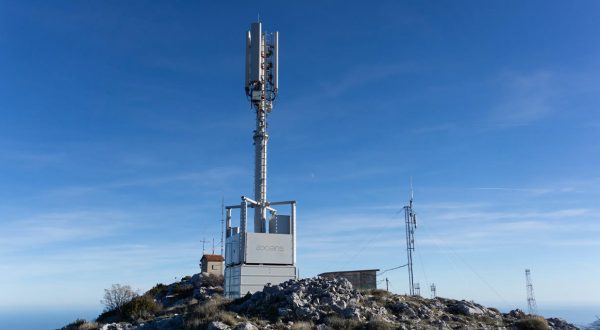An invaluable tool for preventive maintenance – harnessing a system based on sub-millimetre wave sensors and artificial intelligence to view and assess the structural integrity of equipment embedded in building frames.
![]()
Data-driven maintenance of buildings has been spurred on by the use of a new tool: 3D laser scanners, in combination with microwave technology. As a result, you no longer need to open up a wall to inspect hidden equipment, such as pipes embedded in the masonry. The solution – which combines laser technology and AI algorithms provided by VOXELGRID and octo as well as microwave technology honed by WaveScan and used by Axians, VINCI Energies’ ICT brand – enables users to ‘see through walls’ and identify equipment, as well as its components, structural integrity and exact location.
“With the 3D laser scanner and BIM data, we don’t have to guess what’s inside the building frame anymore – we can see it for ourselves.”
Sascha Baecker, Axians Digital Acceleration business development manager, says that, originally, “the WaveScan scanner system was invented to carry out non-destructive testing in fields such as the aviation industry, where it was used to locate cracks within structures that are not visible on the outside. WaveScan came up with an idea to harness its potential in the property sector by using building information modelling (BIM).”
“We used to have to look at printed drawings,” he explains. “And sometimes, if changes were made after the drawings were approved, we would have to open up a wall to find pipes or electrical cables. With the 3D laser scanner and BIM data, we don’t have to guess what’s inside the building frame anymore – we can see it for ourselves. The client has a complete 3D model of their building.”
Hidden cracks
WaveScan’s technology is based on a network of sensors that uses electromagnetic waves to penetrate materials such as tiles, wood, concrete, PVC and dielectric composites to detect subsurface anomalies. The microwaves received by the sensors can also detect cavities inside equipment.
Developed over the past decade, WaveScan was first used to identify submillimetre defects such as cracks and corrosion holes in planes and oil and gas pipelines. This highly accurate and non-destructive form of investigation enables these industries to address issues relating to potentially devastating faults. The 3D scanner and algorithms were then introduced in the construction industry.
WaveScan was designed in Singapore, a metropolis with skyscrapers as far as the eye can see. For safety reasons, the façades of these ageing towers must be inspected regularly, as parts could come loose and endanger passers-by. Visual inspections from aerial work platforms used to be the norm, but these were not only difficult to carry out but also time-consuming and costly.
WaveScan engineers came up with an alternative by designing one specific scanner that can be used in various ways: manually by an operator, from a drone or with a robotic arm.
Highly accurate data
The data transmitted by the wave sensors – and processed by AI algorithms in the cloud – provides information on the different materials and their structural integrity. Technicians can tell whether they are looking at metal or wooden beams, reinforcing bars or insulation materials.
Highly accurate visual and location data is generated almost in real time. Furthermore, magnetic resonance imaging (MRI) can be used to provide 3D images of equipment embedded in walls, including detailed cross-section images.
Faster, more accurate and less costly, scanner systems greatly streamline building inspections and the resulting interventions on equipment. The use of 3D scanners and AI also encourages preventive maintenance, which allows interventions to be carried out before the damage is visible, keeping unwanted costs at bay.
17/12/2020
Learn more:
Video - Wavescan




